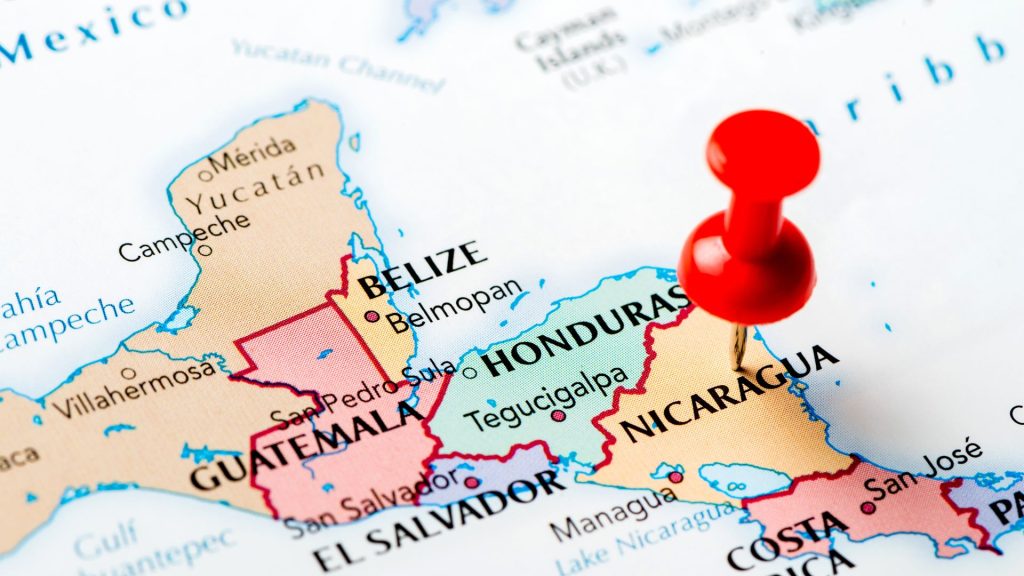Imagine yourself in the crystal clear waters of Nicaragua, battling against one of the ocean’s most elusive creatures – the mighty tarpon.
Get ready for an adrenaline-fueled adventure as you learn about the best fishing spots, tips for landing these powerful fish, and the essential equipment needed to conquer them.
With techniques that will leave you in awe, this article will guide you through the exhilarating world of tarpon fishing in Nicaragua while emphasizing conservation and sustainability.
- Key Takeaways
- The Best Fishing Spots in Nicaragua
- Tips for Catching Tarpon in Nicaragua
- Equipment and Gear for Tarpon Fishing
- Techniques for Landing Big Tarpon
- Conservation and Sustainability in Tarpon Fishing in Nicaragua
-
Frequently Asked Questions
- What Is the Average Size of Tarpon Caught in Nicaragua?
- Are There Any Restrictions or Regulations on Tarpon Fishing in Nicaragua?
- What Is the Best Time of Year to Fish for Tarpon in Nicaragua?
- Can You Eat Tarpon Caught in Nicaragua?
- Are There Any Specific Bait or Lures That Work Best for Tarpon Fishing in Nicaragua?
- Our in-depth country guides for the Americas
Key Takeaways
- Nicaragua is a paradise for anglers, especially those interested in tarpon fishing.
- Tarpon fishing tournaments take place throughout the year, attracting skilled fishermen from around the world.
- Choosing the right bait, such as live mullet, crabs, or artificial lures, increases your chances of success.
- Conservation efforts in tarpon fishing benefit both the species and local communities in Nicaragua.
The Best Fishing Spots in Nicaragua
If you’re looking for the best fishing spots in Nicaragua, you’ve come to the right place! Nicaragua is a paradise for anglers, especially those who are interested in tarpon fishing.
One of the top attractions for tarpon fishing enthusiasts are the thrilling tarpon fishing tournaments that take place throughout the year. These tournaments bring together skilled fishermen from all over the world, competing to catch the biggest and most impressive tarpons.
Additionally, there are plenty of tarpon fishing charters available in Nicaragua that offer guided trips to some of the best spots along its stunning coastline. Whether you’re a seasoned angler or a beginner, these charters provide an excellent opportunity to experience the thrill of catching these powerful and acrobatic fish.
Tips for Catching Tarpon in Nicaragua
When angling for tarpon in Nicaragua, it’s crucial to choose the right bait. Tarpon are known for their strength and acrobatic jumps, making them a challenging fish to catch. To increase your chances of success, here are some tips on tarpon fishing techniques and the best bait for tarpon:
-
Live mullet: These small fish are irresistible to tarpon due to their natural movement and scent. Watching a tarpon strike at a live mullet will get your heart racing with excitement.
-
Crabs: Tarpon love feeding on crabs, so using them as bait can be highly effective. The anticipation of seeing a tarpon engulf your crab bait is exhilarating.
-
Artificial lures: Although not as effective as live bait, artificial lures such as soft plastics or topwater plugs can still entice strikes from hungry tarpon. The thrill of fooling a powerful fish with an artificial lure is unmatched.
Equipment and Gear for Tarpon Fishing
To increase your chances of success, it’s important to choose the right equipment and gear for tarpon angling.
When it comes to tarpon fishing, choosing the right rod and reel is crucial. You need a strong and sturdy rod that can handle the powerful jumps and runs of these mighty fish. Look for a rod that is at least 7-8 feet long with a medium-heavy to heavy power rating. Pair this with a quality spinning or baitcasting reel that has a high line capacity.
As for tackle, there are a few essentials you’ll need. Start with some heavy-duty fluorocarbon leader material, around 80-100lb test, as tarpon have sharp gill plates that can easily cut through lighter lines. Additionally, stock up on circle hooks in sizes ranging from 4/0 to 7/0, as well as some live bait hooks if you prefer using live bait.
Don’t forget to bring along some sturdy pliers for removing hooks and a landing net to safely land your catch.
With the right equipment in hand, you’ll be fully prepared for an exciting day of tarpon fishing!
Techniques for Landing Big Tarpon
Landing big tarpon requires carefully maneuvering them close to the boat before attempting to release them. Tarpon are known for their acrobatic jumps and powerful runs, so it’s crucial to have a solid game plan in place.
Here are some tarpon fishing techniques and tips to help you successfully land these majestic fish:
-
Stay calm: The adrenaline rush can be overwhelming when you hook into a big tarpon, but it’s important to stay calm and focused. Panicking can lead to mistakes that could cost you the fish.
-
Use heavy tackle: Tarpon are strong fighters, so make sure your gear is up to the task. A heavy-duty rod and reel combo with a high-quality line will give you the strength needed to handle these beasts.
-
Play the fish smartly: Tarpon have soft mouths, so it’s essential to avoid excessive pressure on the line. Let them tire themselves out by allowing them to run and jump while keeping steady pressure on the line.
Conservation and Sustainability in Tarpon Fishing in Nicaragua
By practicing catch and release, you can contribute to the conservation and sustainability of tarpon populations in Nicaragua. When you release a tarpon back into the water after catching it, you give it the opportunity to reproduce and ensure the future of this magnificent species.
But conservation goes beyond just your individual actions; community involvement is crucial. By actively participating in local conservation efforts, such as beach clean-ups or supporting research initiatives, you help protect the habitats where tarpons thrive.
This not only benefits the tarpon population but also has a positive economic impact on local communities. Tarpon fishing tourism provides income for many people in Nicaragua, from boat operators to guides and accommodation providers. By conserving tarpon populations, we can ensure that this sustainable source of income continues for generations to come.
Other things to do in Nicaragua
Frequently Asked Questions
What Is the Average Size of Tarpon Caught in Nicaragua?
The average size of tarpon caught in Nicaragua is 40-80 pounds. However, it is not uncommon to catch tarpon that are much larger. In fact, the world record for the largest tarpon ever caught was set in Nicaragua in 2003. The fish weighed 286 pounds and 9 ounces.
The best time to tarpon fish in Nicaragua is from May to June, when the fish are actively feeding and migrating. The most popular spots for tarpon fishing in Nicaragua include:
- Rio San Juan: This river is home to a large population of tarpon, and it is a popular spot for both local and visiting anglers. Rio San Juan Nicaragua tarpon fishing hotspot
- Clarence Lake: This lake is located in the northern part of Nicaragua, and it is home to some of the largest tarpon in the country. Clarence Lake Nicaragua tarpon fishing hotspot
- The Corn Islands: These islands are located off the coast of Nicaragua, and they are a popular destination for anglers from all over the world. The tarpon on the Corn Islands are known for their aggressive behavior and their ability to put up a long and exciting fight. Corn Islands Nicaragua tarpon fishing hotspot
If you are looking for a challenging and rewarding tarpon fishing experience, then Nicaragua is a great place to go. With its warm, shallow waters and abundant baitfish, Nicaragua is sure to provide you with a memorable tarpon fishing trip.
Are There Any Restrictions or Regulations on Tarpon Fishing in Nicaragua?
In Nicaragua, you’ll find regulations and restrictions for tarpon fishing to protect these majestic creatures. Conservation efforts are in place to ensure their survival. Respect the rules and contribute to preserving this natural wonder.
What Is the Best Time of Year to Fish for Tarpon in Nicaragua?
The best time of year to fish for tarpon in Nicaragua is during the dry season, from December to April. The warm waters and calm weather make it ideal for targeting these majestic fish.
Can You Eat Tarpon Caught in Nicaragua?
Yes, you can eat tarpon caught in Nicaragua. Tarpon fishing is popular there, with the best spots being Rio San Juan and Lake Nicaragua. Tarpon can also be found in other countries.
Are There Any Specific Bait or Lures That Work Best for Tarpon Fishing in Nicaragua?
When fishing for tarpon in Nicaragua, selecting the right bait and lures is crucial. Consider using live baitfish like mullet or sardines, as well as artificial lures such as soft plastic jerkbaits or topwater plugs for enticing strikes.
Our in-depth country guides for the Americas
Argentina
Belize
Brazil
Colombia
Costa Rica
Cuba
Dominican Republic
Ecuador
El Salvador
Guatemala
Honduras
Mexico
Nicaragua
Panama
Peru
Suriname
Trinidad and Tobago
United States


